For many community colleges, alumni associations are uncharted territory. But they have a ton of potential to create authentic connections with your graduates and develop new fundraising pipelines.
For Alex Karvounis, who has been a Graphic Designer and Photography Coordinator at MiraCosta College for over eight years, fundraising wasn’t part of his usual work territory.
But emails from New York University, his alma mater, got him thinking about what an alumni association could do for MiraCosta College and what it would look like at a two-year community college.
“[What] we figured out was, Yes, we’re looking for revenue to come in for scholarships and support,” he said. “And of course, the other big part would be for the graduates to make sure that they had a place to continue to connect with the college after they left.”
Alex volunteered to work with a committee to get the MiraCosta Alumni Association off the ground. It was a daunting job for a team of only three people who already had full-time commitments at the college. But within only six months of its launch in January 2017, it went from one member to over a thousand.
Three years in, new members and donations just keep coming, which translated to real-world impacts for students with financial need.
Alex speaks with us about what it takes to build a successful alumni association from the ground up on this episode of Higher Education Coffee & Conversation.
Building an Alumni Association Is a Marathon — Not a Sprint
The two most important things to have when building an alumni association, Alex says, are enthusiastic people to lead the charge and a nucleus of potential members who will want to participate.
Those enthusiastic people who are tasked with the hard work of getting things up and running need to take on extra hours of unpaid work in addition to their other jobs and duties, so their hearts need to be in it.
“Looking back on it two and a half years later,” Alex says, “it wouldn’t have happened if we weren’t fully invested.”
But building an alumni association internally rather than hiring new staff or outsourcing labor has its benefits: you already have access to databases and resources that will help you carry out your mission — and your talented staff already knows how to best use those resources.
Take the time to plan ahead. You’ll thank yourself later.
Success doesn’t happen overnight.
Alex says he and his team spent two months researching alumni associations at other colleges and universities before even beginning to build MiraCosta’s organization. They also put together a list of tasks and questions they would need to answer before an official launch.
Here are a few things you might need to think about before launching an alumni association. The answers will differ based on your institution and alumni base:
- Who qualifies to be part of the association?
- How will you use the database of members?
- What kind of events will the organization host?
- What kinds of donations will you request?
- How will you communicate with your alumni?
- How often will you communicate with them?
Make sure you have all the pieces in place before you officially launch: the website, positioning statements, contact information, even postcards and merchandise.
“Being prepared saved us,” Alex says.
Cultivation is a challenge.
You’ll need a lot of institutional support to form a successful organization: look to your college’s faculty — especially graduates who now work at your college — to promote the association among their students.
But don’t expect to see an immediate return on investment.
Getting donations from alumni is a long-term goal, so keep your eye on the distant prize.
Cultivation over time is important. Not all alumni will have the funds to make a large donation in the immediate years after they graduate from college. Someone might be a member of the association for years before making a donation — but that donation could end up being a big one if you play your cards right.
“[They] don’t have [the money] yet. But we’re still talking to [them] because [they’re] important,” Alex says. “And eventually, that money will come around. And then you’ll get the donation that you’ve been working so hard for.”
Getting It off the Ground
Getting your alumni association to make a profit and begin funding scholarships is going to take some time. And the first major challenge is finding an initial set of members to get the ball rolling.
At MiraCosta, Alex was able to meet the association’s initial goal of 1,000 members within only six months.
Within a year, it became the largest affinity association on campus and continues to grow every year.
Getting there was a result of the months of planning and research that was conducted before launching, he says. Here are a few of his best tips on how to build your organization in its first few months.
1. Don’t charge membership fees.
An annual or one-time membership fee may be the easiest way to generate funds from your alumni association, but this is only a short-term solution. It might only succeed at barring certain populations of students from participating at all.
Free membership is the best way to get a high volume of new members. Look at members as a long-term investment that could generate more — and more consistent — donations down the road. Think about the long play.
An important part of the alumni association is its role in building pride in the institution, and making membership accessible to all is an essential part of that strategy.
“We want the funding and support, but we also want that long-lasting connection to continue,” Alex explains. “If we made the association free, we can continually give information out to remind them, You are a part of this community the day you start at the college, after you graduate, and as you move on to your career in the real world.”

2. Start by reaching out to current students.
Joining the association should be a choice, Alex says; students should not be automatically enrolled upon graduation. No one likes surprise emails.
Voluntary sign-up involves more direct participation from alumni and encourages further active participation in the future.
The best place to find your first willing participants is among soon-to-be graduates.
MiraCosta College was able to target students at their graduation ceremony with a video welcoming graduates to the alumni community. Staff were right there at commencement to help them register for the alumni association as they waited to do their commencement procession.
“It was very easy to convince them…many people [didn’t] know what the alumni association was. You quickly explain it to them, remind them it’s free, [and say] Just sign up on the iPad,” Alex said. “Anytime you ask somebody to sign up for free and hand them an iPad, you see a huge spike in numbers.”
3. Don’t forget your older alumni.
“We didn’t care if it was 1952 or 2012; an alum is an alum,” Alex says about initial outreach.
Outreach efforts should differ by demographic and age group. More recent graduates can be easily reached with regular newsletters featuring student and alumni stories.
But older alumni can be more difficult to reach: not all are fully versed in email. It may take a phone call or a postcard in the mail to get their attention.
It’s more work, but your older alumni are invaluable when it comes to fundraising.
“Those are also people who may have had a career, or are currently in a late-stage in their career and have the funds to donate.”
Getting Creative With Your Fundraising
Remember why you’re building pride among your alumni within your association: to raise funds for the next generation of students.
So don’t be afraid to take every opportunity to collect donations.
“That’s what we need to do to make sure that our students have all the resources they need,” Alex says. “Many of them had scholarships…that’s what helped them get through the school, and they’re willing to give back.”
MiraCosta’s alumni association emails have multiple “donate now” buttons scattered throughout the newsletter.
There are also plenty of creative ways to solicit contributions that will keep your graduates engaged:
- Hold an inaugural in-person event. Getting alumni on campus interacting with current students cultivates a sense of community and is an important part of finding those student and alumni stories.
For MiraCosta, creating an annual fundraising gala was a successful way of making that happen.Tickets quickly sold out in the gala’s first year, and with the help of ticket sales, raffles, and donation opportunities throughout the night, the gala raised almost $15,000.
“It turned out to be a fantastic event. And we used that information to raise more money afterward and get more signups saying, Look what you’re missing out on by not being part of the alumni association.”
- Become part of the campus community. Your alumni association is going to have limited resources, especially at the beginning of its life.
So if you can’t hold your own large events multiple times per year, join other on-campus events to make the association visible. A ribbon-cutting ceremony or a new arts building? Invite an arts alumnus to talk about what the new building will mean for students’ futures.
“It’s a really nice way to connect the community… and really shows that [the college] did something for these students and now they want to give back.”
- Use incentives. Charging for general membership is risky, but offering special privileges to big donors is just a smart strategy: when MiraCosta’s alumni association was first formed, it offered a special charter membership to anyone who donated $500 to the scholarship fund. Those donors received special membership cards, merchandise discounts, and invitations to exclusive events.
It’s particularly important to have a strong base of members and successful events at the beginning of your association’s life.
Success begets success: More people will want to join something that is already thriving and positive.
What Lifestyle Brands Can Teach Us About Alumni Relations
Building a Culture of Philanthropy on Campus
This article is based on an episode of Higher Education Coffee & Conversation, a podcast featuring higher education experts to discuss trends in marketing, communications, advancement and student success. Subscribe via Apple, Spotify or wherever you listen to podcasts so that you don’t miss future episodes!










